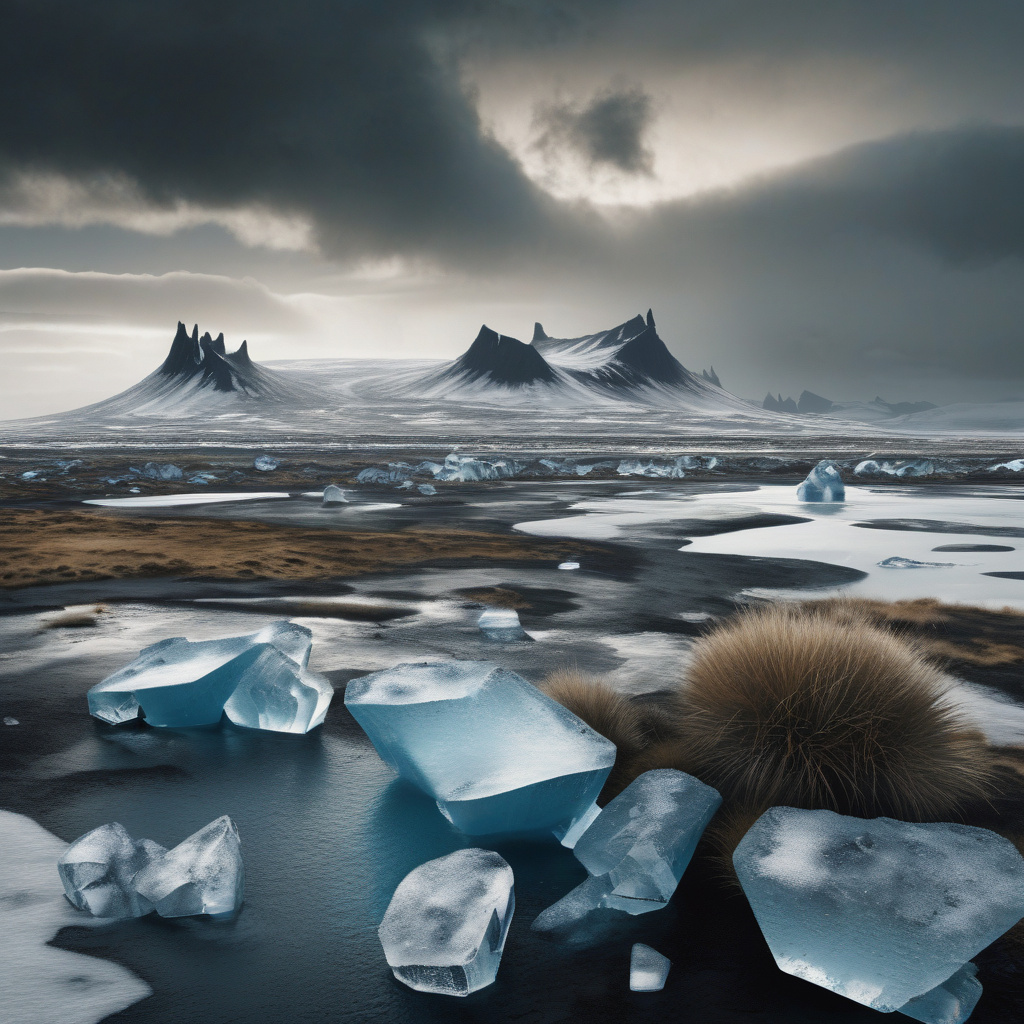The Mini Ice Age: Unraveling the Potential Link to the Fall of the Roman Empire
A new study from Queen’s University found geological evidence in Iceland pointing to a climate phenomenon that may have played a role in the decline of one of the greatest empires in history. The study suggests that a period of cooling known as the “Mini Ice Age” could have been a significant factor in the end of the Roman Empire.
The Mini Ice Age, also referred to as the Little Ice Age, was a cooling period that lasted from the early 14th century to the mid-19th century. While its effects on Europe are well-documented, the potential impact on earlier civilizations such as the Romans has been a subject of debate among historians and scientists.
The study conducted by Queen’s University focused on analyzing unusual rocks found in Iceland, which provided valuable insights into past climate conditions. These rocks, known as “tuyas,” are volcanic landforms that form when lava erupts under a glacier or ice sheet. By studying the tuyas in Iceland, researchers were able to reconstruct past climate variations and assess the potential link to historical events.
One of the key findings of the study was the presence of tuyas dating back to the 6th century, a period that coincides with the onset of the Mini Ice Age. This discovery suggests that Iceland experienced significant cooling during that time, leading to the formation of the tuyas. The researchers believe that this cooling trend could have had far-reaching effects beyond Iceland, potentially influencing weather patterns across Europe.
So, how could a climate shift in Iceland have impacted the Roman Empire hundreds of miles away? The answer lies in the interconnectedness of the global climate system. The cooling in Iceland would have disrupted atmospheric circulation patterns, leading to changes in weather patterns in other regions, including Europe. These changes could have resulted in crop failures, famine, and other challenges that put strain on the Roman Empire.
Historical records also support the idea that climatic changes played a role in the fall of the Roman Empire. Accounts from that time describe harsh winters, failed harvests, and food shortages, all of which are consistent with the effects of a cooling climate. The combination of internal strife, external invasions, and environmental challenges likely contributed to the empire’s eventual collapse.
While the study from Queen’s University provides compelling evidence for the link between the Mini Ice Age and the end of the Roman Empire, it is important to note that climate is just one of many factors that influenced the empire’s decline. Political corruption, economic instability, and military conflicts also played significant roles in shaping the course of history.
Nevertheless, the research sheds new light on the complex relationship between climate and civilization. By studying geological clues from the past, scientists can gain a better understanding of how environmental changes have shaped human societies throughout history. The lessons learned from the rise and fall of empires like the Romans can also serve as a reminder of the importance of environmental stewardship in the present day.
In conclusion, the study from Queen’s University offers valuable insights into the potential impact of the Mini Ice Age on the Roman Empire. By uncovering geological evidence in Iceland, researchers have provided a new perspective on the factors that contributed to the empire’s downfall. While the debate on the fall of the Roman Empire will continue, this research highlights the intricate connections between climate, environment, and human civilization.
climatechange, romanempire, historicalclimatology, environmentalimpact, geologicalresearch









